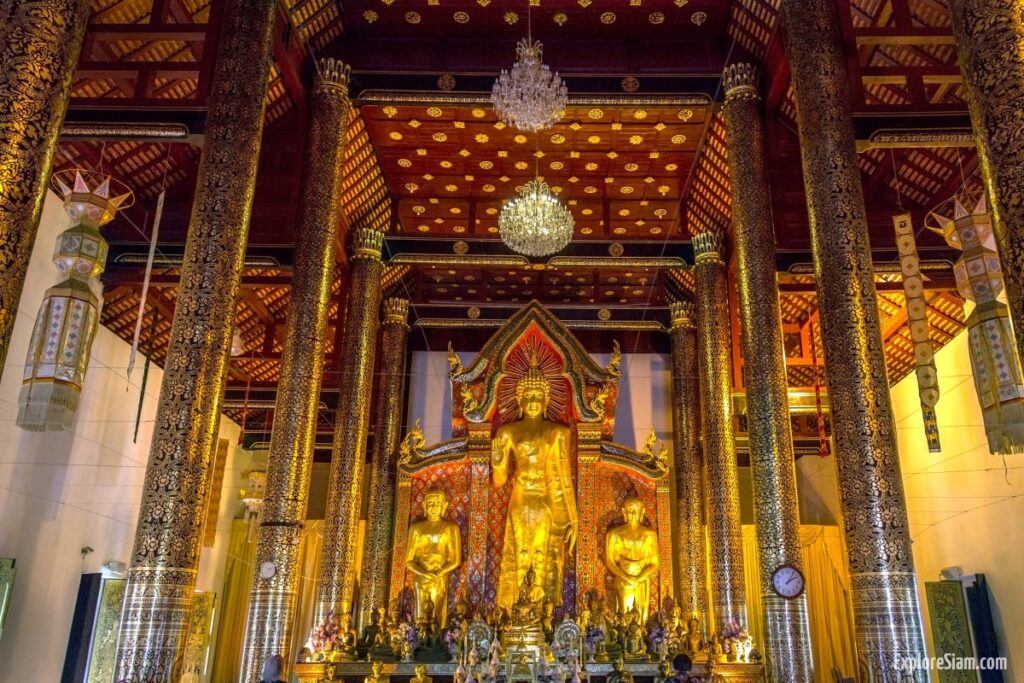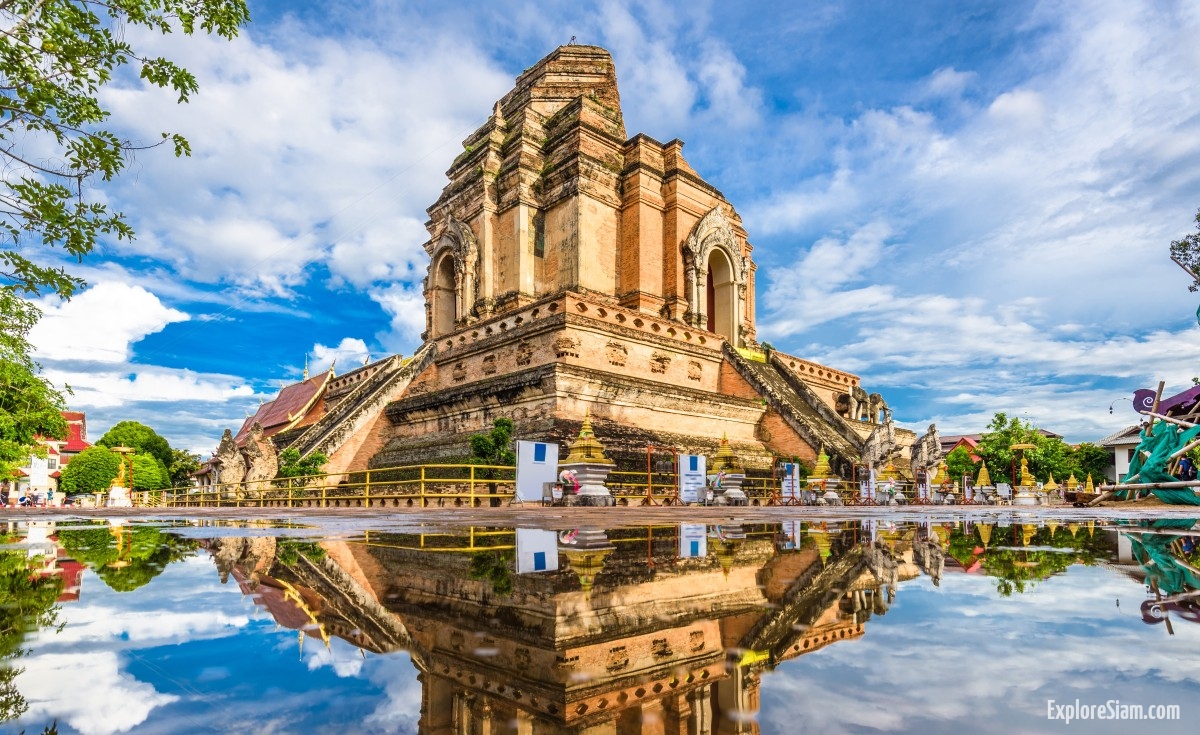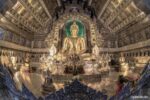Nestled in the heart of Chiang Mai, Thailand’s cultural capital, Wat Chedi Luang stands as a testament to the city’s rich history and architectural grandeur. This ancient temple, whose name translates to “Temple of the Great Stupa,” is not only a place of worship but also a symbol of the city’s heritage, resilience, and spiritual significance.
Historical Significance
Wat Chedi Luang dates back to the 14th century, built during the reign of King Saen Muang Ma. Originally intended to house the ashes of the king’s father, its construction spanned almost a century, reaching completion in 1475. Over the centuries, the temple has witnessed significant historical events, including housing the revered Emerald Buddha, which was later moved to Wat Phra Kaew in Bangkok.
Architectural Marvel
The architecture of Wat Chedi Luang is a blend of Lanna, Burmese, and Sri Lankan styles, reflecting the diverse cultural influences that have shaped northern Thailand. The temple’s most striking feature is the massive chedi (stupa), which once soared to a height of 82 meters (269 feet) but was partially destroyed by an earthquake in 1545, reducing its height to about 60 meters (197 feet). Despite this, the chedi remains an awe-inspiring structure, with its crumbling brickwork and intricate carvings evoking a sense of ancient grandeur.
At the base of the chedi, one can observe the remnants of the original stucco elephants, which were added during the reign of King Tilokaraj. These life-sized elephant sculptures, although partially damaged, continue to stand guard, symbolizing strength and protection. The temple complex also includes several viharns (assembly halls), with the main viharn featuring a beautifully crafted wooden interior and a large seated Buddha image.
The Sacred Naga Staircase
One of the most captivating elements of Wat Chedi Luang is the naga (serpent) staircase that leads up to the chedi. These mythical serpents are a common motif in Thai and Buddhist architecture, symbolizing protection and guardianship. The intricately designed nagas at Wat Chedi Luang are particularly significant, as they represent the temple’s spiritual connection and its role as a guardian of Chiang Mai’s cultural and religious heritage.

Monastic Life and Daily Rituals
Wat Chedi Luang is not only a historical monument but also an active monastery. Monks residing here continue to follow traditional practices, maintaining the temple grounds and conducting daily rituals. Visitors are often drawn to the temple to witness the serene and disciplined life of the monks, participating in or observing chanting sessions and meditation.
The City Pillar (Sao Inthakin)
Within the temple grounds lies another significant structure—the city pillar, known as Sao Inthakin. According to local legend, this pillar was brought to Chiang Mai by King Mangrai, the founder of the city, to ensure prosperity and protection. The pillar is housed in a small shrine and is an essential part of Chiang Mai’s spiritual landscape, with annual festivals held to honor and seek blessings from this sacred symbol.
Restoration and Preservation
Recognizing its historical and cultural importance, efforts have been made to preserve and restore Wat Chedi Luang. The temple underwent significant restoration in the 1990s, with support from UNESCO and the Thai government. These efforts have helped to stabilize the structure and maintain its architectural integrity, ensuring that future generations can continue to marvel at this ancient wonder.
A Center for Cultural Activities
Beyond its religious significance, Wat Chedi Luang serves as a center for cultural activities and community gatherings. The temple grounds frequently host traditional festivals, art exhibitions, and cultural performances, making it a vibrant hub of local life. The annual Inthakin Festival, in particular, draws thousands of visitors who come to pay their respects and participate in various cultural activities.
Visiting Wat Chedi Luang
For travelers exploring Chiang Mai, a visit to Wat Chedi Luang is an essential experience. The temple’s central location makes it easily accessible, and its serene atmosphere provides a peaceful retreat from the bustling city. As visitors wander through the temple grounds, they can reflect on the rich history, admire the architectural details, and soak in the spiritual ambiance that permeates this sacred site.
In conclusion, Wat Chedi Luang stands as a monumental testament to Chiang Mai’s historical and cultural legacy. Its towering chedi, intricate carvings, and serene monastic life offer a glimpse into the city’s past and its enduring spiritual traditions. As both a place of worship and a cultural landmark, Wat Chedi Luang continues to captivate and inspire all who visit, making it a cherished treasure at the heart of Chiang Mai.





